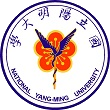|
|
| Line 2: |
Line 2: |
| | <html> | | <html> |
| | <div id="main-content"> | | <div id="main-content"> |
| - | <h>Cleanse-Antibiofilm</h> | + | <h>Control-Inhibitor</h> |
| | + | <h1>Here’s the gist…</h1> |
| | <div class='abstract'> | | <div class='abstract'> |
| | <ul> | | <ul> |
| - | <li>The circuit produces enzymes to degrade biofilms of Streptococcus mutans.</li> | + | <li>Interrupt biofilm formation through artificial genetic interference within <i>S. mutans.</i></li> |
| - | <li>The circuit will be turned on when the environment is suitable for development of oral biofilms, which is under pH 4.0~5.0.</li>
| + | |
| - | <li>The signal protein yebF can help to transport the product enzyme from E.coli to its extracellular environment.</li>
| + | |
| | </ul> | | </ul> |
| | </div> | | </div> |
| | <div class='cont-panel'> | | <div class='cont-panel'> |
| - | <div href='#2c-1'><p>purpose</p></div> | + | <div href='#2c-1'><p>Get started.</p></div> |
| - | <div href='#2c-2'><p>background</p></div> | + | <div href='#2c-2'><p>How to do it?</p></div> |
| - | <div href='#2c-3'><p>design</p></div> | + | <div href='#2c-3'><p>Test it!</p></div> |
| - | <div href='#2c-4'><p style="line-height: 25px;">Functional Measurement</p></div> | + | <div href='#2c-4'><p>Our result~</p></div> |
| - | <div href='#2c-5'><p>result</p></div> | + | <div href='#2c-5'><p>Reference</p></div> |
| | <div style="display:inline-block; width: 640px; height: 0.1px; border: none; margin: 0px"></div> | | <div style="display:inline-block; width: 640px; height: 0.1px; border: none; margin: 0px"></div> |
| | </div> | | </div> |
| | <div class='article indent'> | | <div class='article indent'> |
| - | <h1 id='2c-1'>Purpose</h1> | + | <h1 id='2c-1'>Before we get started:</h1> |
| - | <p>Streptococcus Mutans will form biofilms, a polymeric conglomeration generally consists of extracellular DNA, proteins, and polysaccharides. Biofilm is known for causing dental plaque, tooth decay and gum infection. Also, biofilm make it hard for our engineered probiotics to capture and kill the streptococcus mutans inside our mouths. Nowadays, the most basic way of removing biofilm is by physical methods such as brushing one's teeth regularly. However, there are many people who are not able to do so themselves, so we wanted to innovate and create a biological method to get rid of biofilms with our engineered probiotics. Therefore, we are going to design a circuit that produce several enzymes to destroy biofilm structure.</p> | + | <p><b>Biofilm</b> formation is part of the reason <i>S. mutans</i> is so devastating to oral health (see [Project Overview] for more information). For adequate oral protection, biofilm formation is a problem we must solve, and we can do so internally, by modifying the <i>S. mutans</i> genome, (see [Control: Inhibitor]), or <b>externally<b>, via a modified probiotic. This means we need to know about <b>conditions unique to biofilms<b> in order to design a sensor.</p> |
| - | <h1 id='2c-2'>Background</h1>
| + | |
| - | <p>Extracellular polymeric substance (EPS) is important in the formation of biofilm. The EPS matrix consists of polysaccharides, proteins and nucleic acids. The dense extracellular matrix of the biofilms and the outer layer of cells protect the interior of the community, and in some cases, even increase antibiotic resistance. Even though the biofilm seem to be robust, we found that enzymatic degradation is able to weaken the biofilm structure.</p>
| + | <p>What happens to our teeth if it is covered in biofilm? Metabolic acids which are waste products of <i>S. mutans</i> naturally begin to accumulate to very high concentrations in the local space, and cannot disperse out into the rest of the mouth. This results in a <b>low pH</b> in areas covered by biofilms, about <b>4.0~5.0</b>. Since our probiotic is physically close to <i>S. mutans</i> (see [Cleanse: Attachment]), if our probiotic detects a low pH, there’s a good chance it is within a biofilm. Fig 1 depicts this in a simplified diagram.</p> |
| - | <p>As mentioned before, we are going to use antibiofilm enzyme as our tool. According to 2012 INSA-Lyon and HIT-Harbin iGEM teams, we decided to use lysostaphin as our ideal enzyme. Lysostaphin has activities of 3 enzymes, including glycylglycine endopeptidase, endo-β-N-acetyl glucosamidase and N-acteyl muramyl-L-alanine amidase. Those enzymes can cleave the glycine–glycine bonds, which form cross links between glycopeptide chains in the cell wall peptidoglycan, and cleave the peptidoglycan of a backbone made up of alternating β-1,4 linked N-acetylglucosamine and N-acetylmuramic acid residues as well.</p> | + | |
| - | <h1 id='2c-3'>Design</h1>
| + | <div style="float:right"><img src="/wiki/images/f/f1/NYMU14_Mech1.png" padding-left: 20px;"><p style="font-size: 14px;">Figure 1. </p></div> |
| - | <h3>Promoter (Asr promoter)</h3> | + | |
| - | <p>The Asr promoter comes from Escherichia coli strain MG1655, and has the ability to be induced by external acidification (pH 4.0 ~ 5.0). The sequence of Asr promoter includes an open reading frame coding for a polypeptide consists of 111 amino acids. Besides, according to computer-assisted analysis, the predicted polypeptide also contains a typical signal sequence of 30 amino acids, and it might represent either a periplasmic protein or an outer membrane protein.</p> | + | <p>Now that we know the target pH range, we need to find out what biofilms are made of, and how to get rid of them. Biofilms are actually conglomerated bacteria colonies enmeshed in a self-synthesized layer of extracellular <b>polysaccharide matrix</b>. Of these, <b>PGA</b>, or poly-gamma glutamate, has been demonstrated to be a main component across the biofilm of several phylogenetically diverse bacterial species, and <b>polyglycine bridges</b> can cross-link glycopeptides that make up the cell walls of biofilm-producing bacteria.</p> |
| - | <h3>Signal protein (yebF with RBS)</h3> | + | |
| - | <p>As described in the killing part, yebF is a transporting protein naturally secreted by Escherichia coli, and it can also be used in experimental strains which are rarely involved in protein secretion.</p> | + | <p>The ideal biofilm degrader must be able to target some, if not all, of these elements.</p> |
| - | <h3>Lysostaphin producer (iGEM part BBa_K748002)</h3> | + | |
| - | <p>Part BBa_K748002 comes from 2012 HIT-Harbin iGEM team, and it encodes lysostaphin. Lysostaphin is naturally secreted by Staphylococcus simulans. It is a zinc-containing metalloenzyme of 27 kDa, and has activities of three different enzymes, which are glycylglycine endopeptidase, endo-β-N-acetyl glucosamidase and N-acetyl-muramyl-L-alanine amidase. Glycylglycine endopeptidase hydrolyzes glycylglycine bonds in the polyglycine bridges that form cross links between glycopeptide chains in the cell wall peptidoglycan. As for endo-β-N-acetyl glucosamidase and N-acetyl-muramyl-L-alanine amidase, they can cleave the bonds between N-acetyl glucosamine, N-acetyl muramic acid and alanine respectively. Moreover, lysostaphin is able to lyse actively growing and non-dividing cells in biofilms rapidly, whereas most antibiotics works effectively only on actively dividing cells. Last but not least, lysostaphin has low toxic and cause nearly no side effect on human body. Therefore, we select it as our lytic enzyme against the biofilms of Streptococcus mutans.</p> | + | <h1 id='2c-2'>So how did we do it?</h1> |
| - | <h3>Terminator (iGEM part BBa_B0015)</h3>
| + | <p class="noindent">After careful literature search, we found two promising enzymes:</p> |
| - | <p>A double terminator composed of B0010 and B0012. It has used by many previous teams, and have strong terminating force. | + | |
| - | </p>
| + | <p><b>Lysostaphin</b> is a zinc-containing enzyme 27kDa in size, taken from the genome of <i>Staphylococcus simulans</i>, and was used previously by the [2012 HIT-Harbin iGEM team]. It is particularly powerful because it <b>combines the actions</b> of three different peptidoglycan degradation enzymes, and as such can target a wide variety of the glycopeptides that form cell walls, including features such as the polyglycine bridge. Also, unlike other enzymes of this type, it can <b>target both actively growing and non-dividing cells</b>. To add to its merits, lysostaphin <b>causes no side effects in humans</b>.</p> |
| - | </div> <!-- article-->
| + | |
| - | <div class='article noindent'>
| + | <p><b>Dispersin B</b> comes from <i>Aggregatibacter actinomycetemcomitans</i>, a Gram-negative rod oral bacteria. It is a <b>soluble glycoside hydrolase</b> capable of <b>degrading PGA</b>.</p> |
| - | <h1 id='2c-4'>Functional Measurement</h1> | + | |
| - |
| + | <p>After the enzymes have been decided, we needed to find a promoter responsive to the conditions within a biofilm. The<b>Asr promoter</b> comes from <i>E. coli</i> strain MG1655, and is <b>induced by extracellular low pH</b> of between 4.0~5.0. Perfect for what we need.</p> |
| - | <p>For testing our circuit’s function, we designed a set of experiments.</p> | + | |
| - | <h3>Stage one— Test the Asr promoter</h3> | + | <p>But wait! We’re not quite done yet. Even after being equipped with the Asr promoter, lysostaphin, and dispersin B, our probiotic would still be useless against biofilms unless we <b>export the enzymes out of the cell</b>, where they can do their jobs. Here’s where the signal protein comes in.</p> |
| - | <p>Asr promoter(with RBS)+RFP+Terminator</p> | + | |
| - | <p>Transform the circuit to Escherichia coli, and grow the modified E. coli on agar plates overnight.</p> | + | <p><b>YebF</b> is a signal protein naturally secreted by <i>E. coli</i>, though experimental strains rarely secrete this protein, which makes it useful in synthetic biology. Proteins tacked onto YebF can be expected to also <b>be secreted outside of the host cell</b>, so we put this in front of our enzymes.</p> |
| - | <p><i>Steps:</i><br></p> | + | |
| - | <ol class='cont-ol'> | + | <p>At last, our circuit is complete!</p> |
| - | <li>Pick both red and non-red colonies, and grow the E.coli in separate liquid cultures.</li> | + | <img src="/wiki/images/c/cf/NYMU14_Antibiofilm.png" padding-left: 20px;"> |
| - | <li>Prepare 2 sets of 2 plates, one pH 4 and one pH 7. Spread the red strain liquid culture on one set of the ph4 and 7 plates, and repeat on the other set with the non-red strain.</li><li>Select the strain that expresses growth differences from the previous step. Prepare two of each liquid culture tubes for pH 3.5, 4, 4.5, 5, 5.5, 6, 6.5, and 7, and grow the selected strain in all tubes. Use the growth data from each tube to plot the precise effect of pH on asr promoter.</li>
| + | |
| - | <li>Measure the OD value (RFP/bacterium number).</li> | + | <div style="float:right"><img src="/wiki/images/8/89/NYMU14_Working2.png" padding-left: 20px;"><p style="font-size: 14px;">Figure 2. </p></div> |
| - | </ol> | + | |
| - | <br>
| + | <h1 id='2c-3'>Putting it to the test!</h1> |
| - | <h3>Stage two— Test the signal protein yebF</h3> | + | |
| - | <p>(1) J23100+yebF(with RBS)+RFP+Terminator</p> | + | <p>Having a circuit is only the start! Now we must test how well our circuit functions. For the Antibiofilm circuit, we need to test specifically for three things: the function of the Asr promoter, the function of YebF, and the function of lysostaphin and dispersin B.</p> |
| - | <p>(2) J23100+RFP+Terminator</p><br> | + | |
| - | <p>Transform both circuits to Escherichia coli, and grow the modified E.coli liquid culture overnight.<br></p> | + | <h3>Testing the Function of the Asr Promoter</h3> |
| - | <p><i>Steps:</i><br></p>
| + | <p>For this test we constructed the following circuit in <i>E. coli.</i> We aim to elucidate the exact pH-activity relation by subjecting the circuit to conditions of various pH, and measuring activity via RFP fluorescence intensity, quantized in OD.</p> |
| - | <ol class='cont-ol'> | + | <img src="/wiki/images/e/ed/NYMU14_AntibiofilmT1.png" padding-left: 20px;"> |
| - | <li>Adjust the two cultures to the approximate OD value.</li>
| + | <p class="noindent">Here is the details of our method:</p> |
| - | <li>Centrifuge the cultures and extract the supernatants.</li> | + | <ul><li>Transform the circuit to <i>E. coli</i>, and grow the modified <i>E.coli</i> on agar plates overnight.</li> |
| - | <li>If the YebF signal sequence does work, the E.coli supernatant containing first circuit should be red while the second circuit having normal culture color.</li> | + | <li>Select the strain that expresses growth differences from the previous step. Prepare two of each liquid culture tubes for pH values 3.5, 4, 4.5, 5, 5.5, 6, 6.5, and 7, and grow the selected strain in all tubes. Use the growth data from each tube to plot the precise effect of pH on the Asr promoter.</li> |
| - | </ol> | + | <li>Measure the OD value (RFP/bacterium number), and plot out curves.</li></ul> |
| - | <br>
| + | <h3>Testing the Function of YebF</h3> |
| - | <h3>Stage three—Test the lysostaphin producer iGEM part BBa_K748002 with yebF</h3>
| + | <p>Since we also used YebF in [Control: Target], we have done our functional assays there. Feel free to check it out if you’re interested!</p> |
| - | <p>(1) J23100-(RBS)yebF-lysostaphin-terminator</p>
| + | |
| - | <p>(2) J23100-(RBS)yebF-terminator</p><br> | + | <h3>Testing the Function of Lysostaphin and Dispersin B</h3> |
| - | <p><i>Steps:</i><br></p>
| + | <p>For this part of the test, we designed a novel apparatus we called the [HOPE Box], which allowed us to culture <i>S. mutans</i> in real saliva (yes, real saliva!) and observe their biofilm formation. The HOPE Box provided us with the most accurate representation of the human mouth that we could obtain!</p> |
| - | <ol class='cont-ol'>
| + | |
| - | <li>Transform both circuits to Escherichia coli, and grow the modified E.coli liquid culture overnight. At the meantime, culture Streptococcus mutans biofilms, and add crystal violet to label the location of the biofilms.</li> | + | <h1 id='2c-4'>Our result</h1> |
| - | <li>Adjust the two cultures to the approximate OD value. </li> | + | <h1 id='2c-5'>Reference</h1> |
| - | <li>Centrifuge the cultures and extract the supernatants.</li> | + | <ul> |
| - | <li>Finally, add the solution into the liquid culture of Streptococcus mutans. Use confocal microscope to check the crystal violet stain. The amount of crystal violet stain can show if the biofilms are degraded or not.</li> | + | <li>Na, D., Yoo, S. M., Chung, H., Park, H., Park, J. H., & Lee, S. Y. (January 01, 2013). Metabolic engineering of Escherichia coli using synthetic small regulatory RNAs. Nature Biotechnology, 31, 2, 170-4.</li> |
| - | </ol> | + | <li>Li, Y.-H., Lau, P. C. Y., Tang, N., Svensater, G., Ellen, R. P., & Cvitkovitch, D. G. (November 15, 2002). Novel Two-Component Regulatory System Involved in Biofilm Formation and Acid Resistance in Streptococcus mutans. Journal of Bacteriology, 184, 22, 6333-6342.</li> |
| - | </div> <!-- article noindent -->
| + | <li>Baev, D., England, R., & Kuramitsu, H. K. (January 01, 1999). Stress-induced membrane association of the Streptococcus mutans GTP-binding protein, an essential G protein, and investigation of its physiological role by utilizing an antisense RNA strategy. Infection and Immunity, 67, 9, 4510-6.</li> |
| - | <div class="article">
| + | <li>Yoshida, A., & Kuramitsu, H. K. (December 01, 2002). Multiple Streptococcus mutans Genes Are Involved in Biofilm Formation. Applied and Environmental Microbiology, 68, 12, 6283-6291.</li> |
| - | <h1 id='2c-5'>Result</h1>
| + | <li>Biswas, I., Jha, J. K., & Fromm, N. (August 01, 2008). Shuttle expression plasmids for genetic studies in Streptococcus mutans. Microbiology, 154, 8, 2275-2282.</li> |
| - | <p></p>
| + | <li>Li, Yung-Hua, Tang, Nan, Aspiras, Marcelo B., Lau, Peter C. Y., Lee, Janet H., Ellen, Richard P., & Cvitkovitch, Dennis G. (n.d.). A Quorum-Sensing Signaling System Essential for Genetic Competence in Streptococcus mutans Is Involved in Biofilm Formation. American Society for Microbiology.</li> |
| - | <h1>Reference</h1>
| + | <li>Wu, J., Cho, M. I., & Kuramitsu, H. K. (January 01, 1995). Expression, purification, and characterization of a novel G protein, SGP, from Streptococcus mutans. Infection and Immunity, 63, 7, 2516-21.</li> |
| - | <p></p>
| + | </ul> |
| - |
| + | |
| | </div> <!-- article --> | | </div> <!-- article --> |
| - | </div>
| + | </div> |
| | </html> | | </html> |
| | {{:Team:NYMU-Taipei/NYMU14_Footer}} | | {{:Team:NYMU-Taipei/NYMU14_Footer}} |
Control-Inhibitor
Here’s the gist…
- Interrupt biofilm formation through artificial genetic interference within S. mutans.
Before we get started:
Biofilm formation is part of the reason S. mutans is so devastating to oral health (see [Project Overview] for more information). For adequate oral protection, biofilm formation is a problem we must solve, and we can do so internally, by modifying the S. mutans genome, (see [Control: Inhibitor]), or externally, via a modified probiotic. This means we need to know about conditions unique to biofilms in order to design a sensor.
What happens to our teeth if it is covered in biofilm? Metabolic acids which are waste products of S. mutans naturally begin to accumulate to very high concentrations in the local space, and cannot disperse out into the rest of the mouth. This results in a low pH in areas covered by biofilms, about 4.0~5.0. Since our probiotic is physically close to S. mutans (see [Cleanse: Attachment]), if our probiotic detects a low pH, there’s a good chance it is within a biofilm. Fig 1 depicts this in a simplified diagram.

Figure 1.
Now that we know the target pH range, we need to find out what biofilms are made of, and how to get rid of them. Biofilms are actually conglomerated bacteria colonies enmeshed in a self-synthesized layer of extracellular polysaccharide matrix. Of these, PGA, or poly-gamma glutamate, has been demonstrated to be a main component across the biofilm of several phylogenetically diverse bacterial species, and polyglycine bridges can cross-link glycopeptides that make up the cell walls of biofilm-producing bacteria.
The ideal biofilm degrader must be able to target some, if not all, of these elements.
So how did we do it?
After careful literature search, we found two promising enzymes:
Lysostaphin is a zinc-containing enzyme 27kDa in size, taken from the genome of Staphylococcus simulans, and was used previously by the [2012 HIT-Harbin iGEM team]. It is particularly powerful because it combines the actions of three different peptidoglycan degradation enzymes, and as such can target a wide variety of the glycopeptides that form cell walls, including features such as the polyglycine bridge. Also, unlike other enzymes of this type, it can target both actively growing and non-dividing cells. To add to its merits, lysostaphin causes no side effects in humans.
Dispersin B comes from Aggregatibacter actinomycetemcomitans, a Gram-negative rod oral bacteria. It is a soluble glycoside hydrolase capable of degrading PGA.
After the enzymes have been decided, we needed to find a promoter responsive to the conditions within a biofilm. TheAsr promoter comes from E. coli strain MG1655, and is induced by extracellular low pH of between 4.0~5.0. Perfect for what we need.
But wait! We’re not quite done yet. Even after being equipped with the Asr promoter, lysostaphin, and dispersin B, our probiotic would still be useless against biofilms unless we export the enzymes out of the cell, where they can do their jobs. Here’s where the signal protein comes in.
YebF is a signal protein naturally secreted by E. coli, though experimental strains rarely secrete this protein, which makes it useful in synthetic biology. Proteins tacked onto YebF can be expected to also be secreted outside of the host cell, so we put this in front of our enzymes.
At last, our circuit is complete!


Figure 2.
Putting it to the test!
Having a circuit is only the start! Now we must test how well our circuit functions. For the Antibiofilm circuit, we need to test specifically for three things: the function of the Asr promoter, the function of YebF, and the function of lysostaphin and dispersin B.
Testing the Function of the Asr Promoter
For this test we constructed the following circuit in E. coli. We aim to elucidate the exact pH-activity relation by subjecting the circuit to conditions of various pH, and measuring activity via RFP fluorescence intensity, quantized in OD.

Here is the details of our method:
- Transform the circuit to E. coli, and grow the modified E.coli on agar plates overnight.
- Select the strain that expresses growth differences from the previous step. Prepare two of each liquid culture tubes for pH values 3.5, 4, 4.5, 5, 5.5, 6, 6.5, and 7, and grow the selected strain in all tubes. Use the growth data from each tube to plot the precise effect of pH on the Asr promoter.
- Measure the OD value (RFP/bacterium number), and plot out curves.
Testing the Function of YebF
Since we also used YebF in [Control: Target], we have done our functional assays there. Feel free to check it out if you’re interested!
Testing the Function of Lysostaphin and Dispersin B
For this part of the test, we designed a novel apparatus we called the [HOPE Box], which allowed us to culture S. mutans in real saliva (yes, real saliva!) and observe their biofilm formation. The HOPE Box provided us with the most accurate representation of the human mouth that we could obtain!
Our result
Reference
- Na, D., Yoo, S. M., Chung, H., Park, H., Park, J. H., & Lee, S. Y. (January 01, 2013). Metabolic engineering of Escherichia coli using synthetic small regulatory RNAs. Nature Biotechnology, 31, 2, 170-4.
- Li, Y.-H., Lau, P. C. Y., Tang, N., Svensater, G., Ellen, R. P., & Cvitkovitch, D. G. (November 15, 2002). Novel Two-Component Regulatory System Involved in Biofilm Formation and Acid Resistance in Streptococcus mutans. Journal of Bacteriology, 184, 22, 6333-6342.
- Baev, D., England, R., & Kuramitsu, H. K. (January 01, 1999). Stress-induced membrane association of the Streptococcus mutans GTP-binding protein, an essential G protein, and investigation of its physiological role by utilizing an antisense RNA strategy. Infection and Immunity, 67, 9, 4510-6.
- Yoshida, A., & Kuramitsu, H. K. (December 01, 2002). Multiple Streptococcus mutans Genes Are Involved in Biofilm Formation. Applied and Environmental Microbiology, 68, 12, 6283-6291.
- Biswas, I., Jha, J. K., & Fromm, N. (August 01, 2008). Shuttle expression plasmids for genetic studies in Streptococcus mutans. Microbiology, 154, 8, 2275-2282.
- Li, Yung-Hua, Tang, Nan, Aspiras, Marcelo B., Lau, Peter C. Y., Lee, Janet H., Ellen, Richard P., & Cvitkovitch, Dennis G. (n.d.). A Quorum-Sensing Signaling System Essential for Genetic Competence in Streptococcus mutans Is Involved in Biofilm Formation. American Society for Microbiology.
- Wu, J., Cho, M. I., & Kuramitsu, H. K. (January 01, 1995). Expression, purification, and characterization of a novel G protein, SGP, from Streptococcus mutans. Infection and Immunity, 63, 7, 2516-21.




 "
"




















